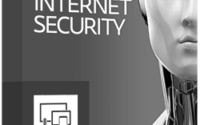The Crucial Role Of IAM in Preventing Cyber Attacks
Amid mushrooming cyber threats, Identity and Access Management software emerge as sentinels guarding digital kingdoms, parrying unauthorized intrusions, and thwarting data pilferage. IAM underpinnings fortify cyberdefense bulwarks, controlling access, and mitigating vulnerabilities. Read this information to get valuable insights about role of IAM in cyber-attacks.
Authentication and authorization:
IAM ensures that only authorized users gain access to sensitive systems and data through robust authentication and authorization mechanisms. By verifying user identities and granting access based on predefined policies and permissions, IAM mitigates the risk of unauthorized access attempts by cybercriminals. Strong authentication methods, such as multi-factor authentication (MFA), bolster security by requiring users to provide multiple forms of verification, thus significantly reducing the likelihood of successful cyber attacks.
Centralized identity management:
Centralizing identity management streamlines access control and enhances security by providing a unified platform for managing user identities and access privileges across the organization. IAM solutions enable administrators to enforce consistent security policies, monitor user activities, and swiftly respond to security incidents. By maintaining a centralized repository of user identities and access rights, IAM reduces the complexity associated with managing disparate systems and ensures greater visibility and control over access permissions.
Continuous monitoring and threat detection:
IAM solutions play a crucial role in continuous monitoring of user activities and detecting suspicious behavior indicative of cyber attacks. By analyzing access logs, authentication attempts, and privilege escalation activities, IAM systems can identify anomalous patterns and security threats in real-time. Integration with Security Information and Event Management (SIEM) platforms enables organizations to correlate IAM data with other security events, enhancing threat detection capabilities and facilitating rapid incident response.
User education and awareness:
In addition to technical measures, IAM contributes to preventing cyber attacks by promoting user education and awareness. Training employees on security best practices, such as password hygiene, phishing awareness, and data protection, empowers them to recognize and report security threats. By fostering a culture of security awareness, IAM reinforces the human element of cybersecurity and serves as a frontline defense against social engineering attacks and insider threats.
IAM is a cornerstone of modern cybersecurity strategies, playing a critical role in preventing cyber attacks and safeguarding organizational assets from unauthorized access and data breaches. By implementing robust authentication, access control, and monitoring mechanisms, organizations can strengthen their defense posture and mitigate the evolving threat land effectively. Moreover, by educating users and promoting security awareness, IAM ensures that every individual within the organization contributes to the collective effort of preventing cyber attacks and preserving the integrity of sensitive information.


